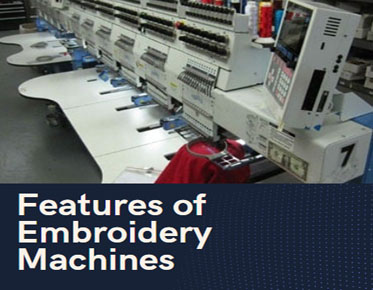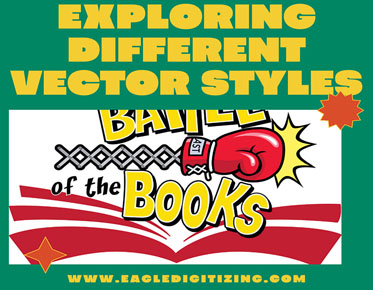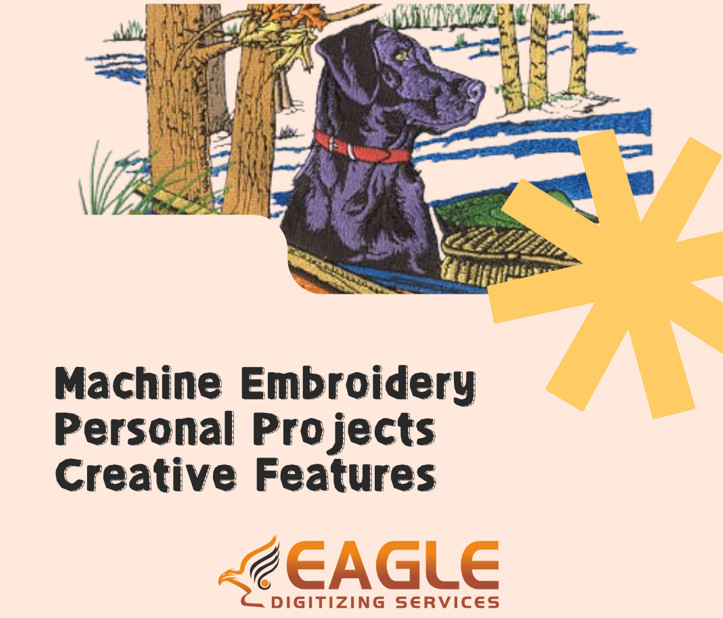Beyond Stitching: Exploring Advanced Features of Embroidery Machines
Embroidery machines have come a long way from their humble beginnings as simple tools for stitching patterns onto fabric. Today, they boast a plethora of advanced features that open up a world of creative possibilities for enthusiasts and professionals alike. In this article, we delve into the realm of advanced embroidery, going beyond basic stitching to uncover the exciting capabilities of modern machines.
Satin
Stitching:
Satin stitching is a technique that creates smooth, glossy lines of embroidery, resembling satin fabric. By adjusting stitch density and length, embroiderers can achieve varying degrees of coverage and sheen, adding depth and texture to their designs.
Fill
Stitching:
Fill stitching, also known as tatami or satin fill, involves densely packed stitches to fill large areas of fabric with intricate patterns. This technique is ideal for creating solid blocks of color or adding dimension to designs through shading and gradient effects.
Chain
Stitching:
Chain stitching creates a series of looped stitches that form a continuous chain-like pattern. This versatile technique is commonly used for outlining and adding decorative accents to embroidery projects, offering a classic yet intricate look.
Metallic
Threads:
Metallic threads add a touch of glamour to embroidery projects, with their shimmering appearance catching the light and creating eye-catching effects. However, working with metallic threads requires special considerations, such as using metallic needles and adjusting tension settings to prevent breakage and thread shredding.
Variegated
Threads:
Variegated threads feature multiple colors within a single strand, producing stunning gradient effects and color transitions in embroidery designs. By selecting the right variegated thread and adjusting stitch parameters, embroiderers can achieve striking visual effects that elevate their creations.
Specialty
Needles:
Specialty needles, such as ballpoint and titanium-coated needles, are designed to handle specific fabrics and threads with ease, reducing the risk of thread breakage and fabric distortion. Choosing the right needle for each project ensures optimal stitching performance and preserves the integrity of delicate fabrics.
Digitizing
Software:
Embroidery digitizing software allows embroiderers to create custom embroidery designs from scratch or convert existing artwork into stitch patterns. With intuitive design tools and advanced editing features, digitizing software empowers users to unleash their creativity and bring their visions to life with precision and accuracy.
Custom
Design Creation:
With computerized embroidery machines, the possibilities for custom design creation are virtually endless. From monograms and logos to intricate motifs and personalized artwork, embroiderers can easily tailor their designs to suit any project or client's requirements, offering a truly bespoke embroidery experience.
Automatic
Thread Tension Adjustment:
Automatic thread tension adjustment features eliminate the guesswork from the embroidery process, ensuring consistent stitch quality across different fabric types and thicknesses. By automatically adjusting tension settings based on fabric and thread parameters, embroidery machines deliver flawless results with minimal effort from the user.
Appliqué:
Appliqué is a versatile technique that involves layering fabric shapes onto a base fabric and securing them with embroidery stitches. This method allows embroiderers to add texture, dimension, and color contrast to their designs, creating visually striking embellishments for garments, accessories, and home decor items.
Trapunto:
Trapunto, also known as stuffed or raised embroidery, adds three-dimensional elements to embroidery designs by padding certain areas with extra layers of fabric or batting. This technique enhances the tactile appeal of embroidered motifs, making them stand out against the fabric surface and adding depth and dimension to the overall composition.
Cutwork:
Cutwork embroidery involves cutting away fabric from embroidered areas to create intricate lace-like patterns and openwork designs. This delicate technique requires precision and attention to detail, as embroiderers carefully stitch around designated areas before removing excess fabric to reveal the underlying motif.
Multiple
Hoop Sizes:
Embroidery machines offer a range of hoop sizes to accommodate different project dimensions and design requirements. By selecting the appropriate hoop size for each project, embroiderers can ensure optimal fabric tension and stitch quality, resulting in professional-looking results every time.
Hoopless
Embroidery:
Hoopless embroidery techniques allow embroiderers to stitch designs directly onto fabric without the use of a traditional embroidery hoop. This method is ideal for embroidering large or bulky items that cannot be easily hooped, such as quilts, tote bags, and upholstery fabrics, offering greater flexibility and versatility in the embroidery process.
Choosing
the Right Stabilizer:
Stabilizers are essential for achieving clean, crisp embroidery results, providing support and stability to the fabric during the stitching process. By selecting the right stabilizer for each project and fabric type, embroiderers can prevent puckering, distortion, and shifting, ensuring smooth and professional-looking embroidery on a variety of materials.
Thread
Sensors:
Thread sensors detect thread breaks and shortages during the embroidery process, alerting users to potential issues and preventing stitching errors. By monitoring thread tension and continuity in real time, embroidery machines ensure uninterrupted stitching and minimize the need for manual intervention, saving time and reducing wastage.
Automatic
Thread Cutters:
Automatic thread cutters streamline the embroidery process by trimming excess thread at the beginning and end of each stitching sequence, eliminating the need for manual snipping and reducing thread waste. This feature improves workflow efficiency and enhances the overall user experience, allowing embroiderers to focus on creating without interruption.
Built-in
Embroidery Designs:
Many modern embroidery machines come pre-loaded with a wide range of built-in embroidery designs, offering endless creative possibilities for users of all skill levels. From decorative motifs and border patterns to monograms and alphabets, built-in designs provide instant inspiration and convenience, allowing embroiderers to start stitching right away without the need for additional digitizing or design software.
Quilting:
Embroidery and quilting go hand in hand, with many enthusiasts incorporating embroidered motifs and embellishments into their quilt designs. Whether adding decorative accents to quilt blocks or stitching intricate patterns onto quilted surfaces, embroidery enhances the beauty and complexity of quilted creations, adding texture, dimension, and visual interest to the finished pieces.
Cross-Stitch:
Cross-stitch and embroidery share a rich history and many similarities in technique and aesthetics. Combining cross-stitch elements with embroidery allows crafters to create unique fusion designs that blend the timeless charm of cross-stitch with the versatility and sophistication of embroidery, resulting in stunning works of textile art that appeal to stitchers of all ages and skill levels.
Needle
Felting:
Needle felting is a versatile craft technique that involves sculpting wool fibers with a barbed needle to create three-dimensional shapes and textures. By incorporating needle-felted elements into embroidery projects, crafters can add whimsy, depth, and tactile appeal to their designs, transforming ordinary fabrics into extraordinary works of art that beg to be touched and admired.
Thread
Breakage:
Thread breakage can occur for various reasons, including improper tension settings, dull needles, and thread quality issues. To prevent and resolve thread breakage, embroiderers should check and adjust tension settings, use high-quality threads and needles, and ensure proper maintenance and lubrication of their embroidery machines.
Design
Distortion:
Design distortion can occur when stitching complex or dense embroidery designs on stretchy or delicate fabrics. To minimize distortion and maintain design integrity, embroiderers should use appropriate stabilizers, and hoop fabrics tightly to minimize movement and select designs that are compatible with the fabric's stretch and drape characteristics.
Bobbin
Tension Problems:
Bobbin tension problems can manifest as loose or tight stitches on the underside of embroidered fabric, affecting the overall quality and appearance of the finished piece. To troubleshoot bobbin tension issues, embroiderers should check and adjust bobbin tension settings, ensure proper threading and bobbin placement, and clean and lubricate bobbin case components regularly to prevent lint buildup and friction.
Embroidery
Foot Attachments:
Embroidery foot attachments, such as open-toe and free-motion feet, enhance visibility and maneuverability when stitching intricate embroidery designs. By selecting the right embroidery foot for each project and technique, embroiderers can achieve precise stitching results and tackle even the most intricate and challenging embroidery tasks with confidence and ease.
Bobbin
Cases:
Bobbin cases are essential components of embroidery machines, holding the bobbin in place and controlling thread tension during stitching. By choosing high-quality bobbin cases and regularly cleaning and maintaining them, embroiderers can ensure smooth and consistent bobbin thread delivery, minimizing the risk of tension issues and thread jams.
Specialty
Presser Feet:
Specialty presser feet, such as walking and quilting feet, offer additional functionality and versatility for embroidering a wide range of fabrics and projects. By investing in specialty presser feet and familiarizing themselves with their unique features and benefits, embroiderers can expand their creative horizons and take their embroidery skills to the next level, achieving professional-quality results with ease.
Regular
Cleaning Routines:
Regular cleaning routines are essential for maintaining optimal performance and prolonging the lifespan of advanced embroidery machines. By following manufacturer-recommended cleaning procedures and schedules, embroiderers can remove dust, lint, and debris from machine components, ensuring smooth operation and preventing mechanical issues and malfunctions.
Lubrication:
Lubrication is crucial for keeping embroidery machine mechanisms running smoothly and preventing wear and tear on moving parts. By applying lubricant to designated areas according to manufacturer guidelines, embroiderers can reduce friction, minimize noise, and extend the life of their machines, ensuring reliable performance and stitch quality over time.
Software
Updates:
Software updates provide essential bug fixes, performance improvements, and new features for embroidery machine operating systems and digitizing software. By regularly checking for and installing software updates, embroiderers can stay up to date with the latest advancements in embroidery technology, ensuring compatibility with new file formats and design features and optimizing their workflow efficiency and productivity.
In conclusion, advanced embroidery machines offer a wealth of features and capabilities that
enable embroiderers to push the boundaries of their creativity and achieve
stunning results with ease. From mastering advanced stitching techniques and
exploring specialty threads to harnessing the power of computerized embroidery
and integrating embroidery with other crafts, the possibilities are endless. By
embracing innovation, experimentation, and continuous learning, embroiderers
can unlock new levels of artistry and craftsmanship, transforming ordinary
fabrics into extraordinary works of textile art that inspire and delight. So,
why stop at stitching? Dive deeper into the world of advanced embroidery and
unlock the full potential of your creativity today!



